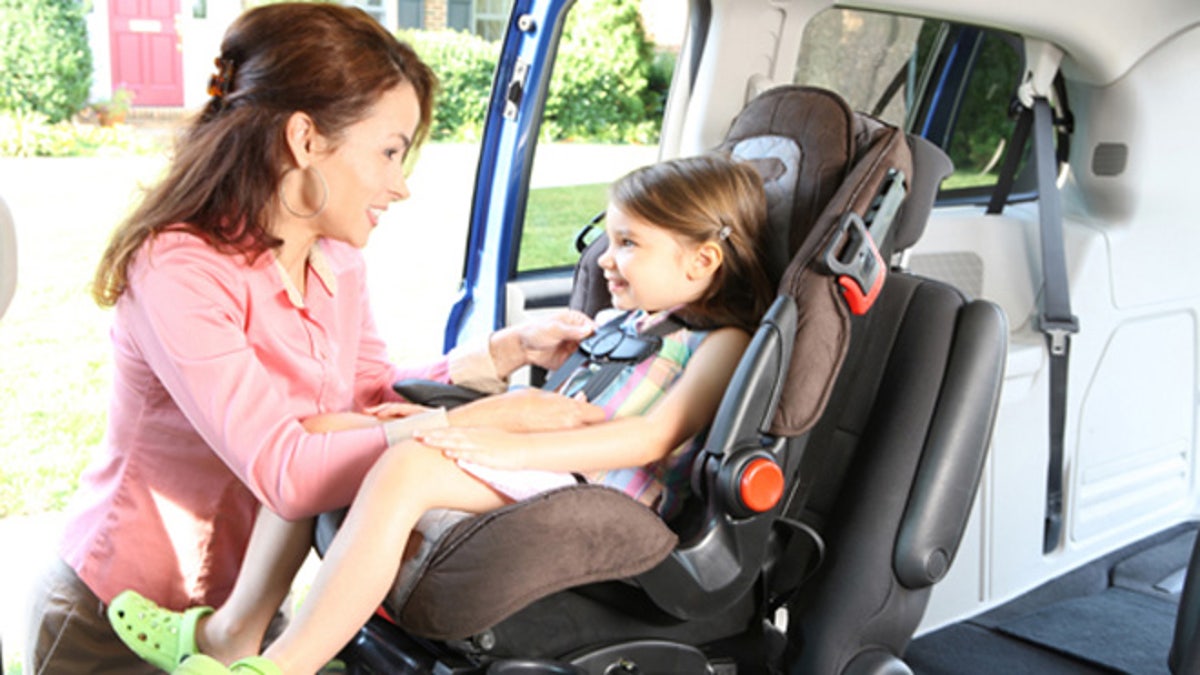
(NHTSA)
With the kids back at school and parents’ schedules more hectic, mid-September is a good time for a reminder of proper car-seat safety. September 15-21 is also Child Passenger Safety Week.
The child safety experts at AAA have identified the following 12 common car-seat mistakes parents make, as well as corrective action parents and caregivers can take:
Moving a child out of a booster too soon
This is unsafe for the child because seat belts are designed to fit adults, not children. Injuries to the abdomen or chest can occur from improper seat belt fit during a crash or abrupt stop. The remedy is to keep your child in a booster seat until the seat belt fits them properly – lap belt positioned low across the hips and upper thighs, shoulder belt across the chest and collarbone. Children should be able to sit with their back against the vehicle’s seat, kneed bent at the seat edge and feet touching the floor. This transition is typically between the ages of 8-12.
Car seat not installed tightly enough
The car seat will not stay put if the seat belt or lower car seat anchor connection is too loose. This subjects your child to greater crash forces. The fix is to ensure the car seat does not move side-to-side or front-to-back more than one inch when tested at the belt path.
Too-loose harness straps
If the harnesses are too loose, your child cannot be properly restrained in a crash. This may result in subjecting your child to higher crash forces or being ejected from the seat. To remedy this, ensure that the harness straps lay flat, without any twists. It should be snug enough that you cannot pinch any extra material at the child’s shoulder.
Retainer or chest clip too low
The purpose of the retainer clip is to keep the child secure in the car seat in the event of a crash or sudden stop. A retainer clip that is too low can allow the child to come out of the harnesses. The hard plastic retainer clip can also cause internal damage to the abdomen. The fix here is to place the retainer clip at armpit level.
Turning your child forward-facing too soon
Turning a child forward-facing before age two can result in head, neck or spinal cord injury due to their undeveloped bodies. To safeguard children, keep them in a rear-facing car seat until they reach the upper weight or height limit recommended by the car seat manufacturer. Once your child outgrows a rear-facing infant seat, switch to a rear-facing convertible seat with higher height and weight limits.
MORE: See our other car seat tips and top 10 child car seats
Allowing children under age 13 to ride in front seat
It’s a fact that children under the age of 13 are typically not large enough to safely ride in the front seat. Front passenger airbags can seriously injure them in a crash. The remedy here is to have all children under age 13 ride in the back seat, properly restrained.
Forgetting to use the top tether
Without the top tether, during a crash or sudden stop, your child’s head and neck will be subjected to excessive forward movement. The AAA says that, when recommended, always use the top tether with LATCH or seat belt installations.
Adding extra padding, mirrors, toys to the car seat
The problem with putting toys, mirrors and extra padding on or in the child’s car seat is that these are products that have not been tested with the seat and may interfere with how it was designed to perform in a crash. These additional items can also become dangerous projectiles in a crash or sudden stop. The remedy is to only use products that come with the car seat or are recommended by the car seat manufacturer. In addition, store any loose items securely in the trunk or secure storage space.
Installing a car seat using LATCH in the center rear seat (when not permitted by the manufacturer)
In most vehicles, LATCH installation in the center rear seat is not supported. Using lower anchors that are intended for outboard car seats could cause the system to fail and the car seat could be thrown during a crash. Read your vehicle owner’s manual. Only use lower anchors in seating positions approved by the vehicle manufacturer.
Transporting heavy or unsecured items (including pets)
Any loose item in the vehicle can prove dangerous in the event of a crash, seriously injuring passengers. The remedy is to secure items in a storage bin, glove compartment or the trunk. As for pets, properly restrain them with approved devices.
Installing car seat with both LATCH and a seat belt
Using more than one system to install a car seat may put unnecessary stress on the car seat and affect its performance in a crash. The AAA says that two is not better than one. Install the car seat in the approved seating position with lower anchors OR the seat belt. Do not use dual systems simultaneously unless the manufacturers of the car seat and the vehicle permit it.
Wearing bulky coats or sweaters while buckled into a car seat
Any unapproved padding, including coats and sweaters, placed under or behind the harness can compress in a crash, creating slack in the harness system. The solution is to place jackets or blankets over the child after ensuring the harness is secure and snug.